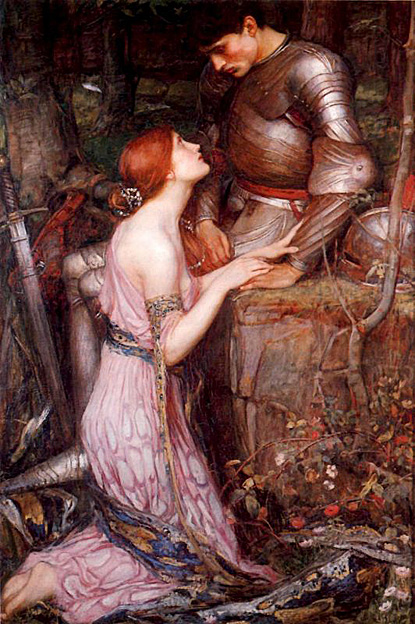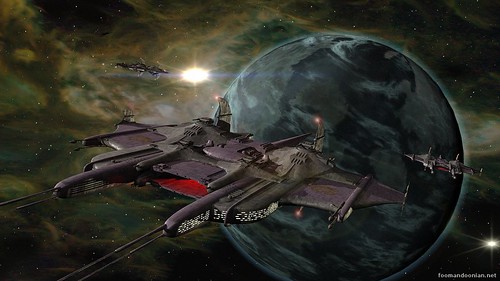Finding Inspiration - Part I
....literally in the case of GW) that taunt me with tales of past failures and frustrations. Yet, there is something about that blank canvas that I find appealing. As much as I love a well painted finished figure there's something about the endless possibilities that intrigues me when I stare at that primed surface and something, ever so slightly sad, about the first few coats of paint I put on. It's as if all the possibilities of have died off but one.
But it's that blank canvas upon which I will focus for this article.
The first thing I usually do when I see an interesting new figure is find out what is the standard/studio paint scheme from the manufacturer. While that will rarely match my final scheme it's often a starting point from which my imagination will run. Beyond that begins a journey of exploration. Given that the bulk of the miniatures I enjoy painting come from either futuristic space genres or the shambling hordes of a fantastic mythical past I am rarely ever tied to a single concept. It's one of the things that appeals to me the most about doing figures that aren't from a historic range. In my world goblins can be red or green or even grey-skinned like stone. Japanese Oni can dance in fantastic shades of blue or stand stoic in the dark browns of a mountain. "My universe, my rules" equals whatever possibilities my imagination can find.
When it comes to fantasy figures I often start by looking through paintings and artwork. Be it modern digital art or classical pictures of dragons and knights or even the scribbles on cave walls from tens of thousands of years ago man has long let his imagination run free in art exploring the beauty - and horror - of the universe. Even a causal search engine viewing can give one thousands of pictures of ancient tombs, hieroglyphics, medieval manuscripts and huge cathedrals covering fantastic ideas of strange worlds beyond our own.
(Early non-metal metallic technique?)
(Medieval Knight by John William Waterhouse)
In the early stages of research I'm looking less for specific colours and more for the general "feeling" that I want a figure to have. What kind of daemon is it: Feral, violent, and hungry or seductive, elusive, and alluring? Each figure or unit that I try and paint slowly starts to take on a personality shaped by what I feel the artist/sculptor is trying to create. Are the spirits of the forest mischievous or dreadful? Is the ogre a savage brute or a tragic and tormented being? Each image I view will help me narrow down how I feel the mini was meant to be. It is here where the shape (posing/converting) and palette of the figure start to form.
(hey beautiful, didn't I see you at the club last night?)
(Sculpture and paintjob by Jerome Otremba)
(pass me a glass of Braviri!)
As the personality of a mini starts to form I begin the next stage in inspiration. The "Fluff" - the stories and backgrounds created in the gaming universes I follow each hold a part in how I feel a model should be crafted and created. When I read about the PHR for Dropzone Commander my mind began to dance with visions worlds filled by technophiles and inventors - filled by a people who were swayed by the whispers of a hyper-intelligence that came and visited the earth. In my mind theirs are shining worlds filled with towers of glass and steel and are run with the fluid grace of a melding of man and machine. Images of "Ghost in the Shell" and "Macross" and other anime series began to flood my head. These weren't refurbished units that have seen a hundred years of conflict (like the Resistance models from Hawk) - these were state of the art high tech machines born and bred to fight. The final figures had to have a glint of steel on every edge but also the softer earthen tones of ceramic materials formed in ways we can't imagine in the real world. To the infantry I became inspired by Ghost in the Shell (the Siren Core).
Each of these points of inspiration add layers to the final vision of what and how I want something painted. How have others painted it? What would it look like in history? What is the intent and vision of the sculptor? What place does it have in the worlds of my imagination? Each of these layers but add and subtract to what I hope to achieve in the final product.
Coming next, Part II - Bringing inspiration to life.




No comments:
Post a Comment